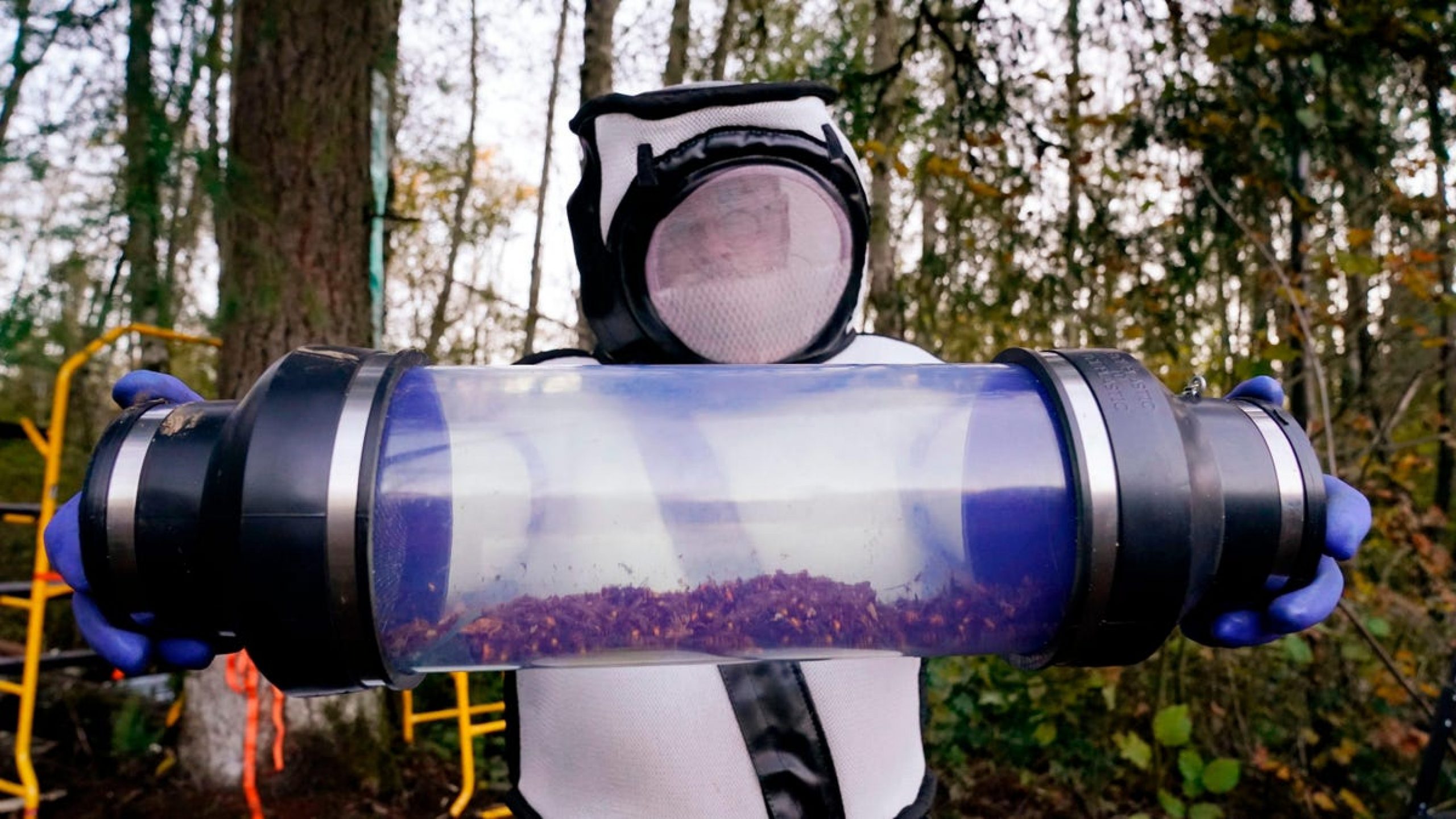The Murder Hornets Are Back to Terrorize Us for Another Year

Humanity just can’t catch a break, and it looks like the honeybees in Washington state can’t, either.
In recent days, the Washington State Department of Agriculture has confirmed the first report of a live Asian giant hornet—also known as murder hornets for their tendency to, you know, murder honeybees, humans, and other insects—in the region for 2021. The murder hornet in question had set its bloodthirsty sights on a paper wasp nest and was spotted by a resident in a rural area east of the city of Blaine.
The state agriculture department will now proceed to set traps in area to try to catch a live murder hornet, tag it, and follow it back to its nest. Given that the sighting was about half a mile (0.80 kilometers) from the U.S. border with Canada, the British Columbia government is also setting traps.
“This hornet is exhibiting the same behavior we saw last year–attacking paper wasp nests,” Sven Spichiger, a managing entomologist for the state’s agriculture department, said in a news release. “If you have paper wasp nests on your property and live in the area, keep an eye on them and report any Asian giant hornets you see. Note the direction they fly off to as well.”

G/O Media may get a commission

The area where the murder hornet was seen is about two miles (3.2 kilometers) from where the state agriculture department exterminated the first nest of murder hornets last October. That operation led to the demise of 98 worker hornets. The murder hornet identified this week is one of two in Washington state reported this year so far. However, the other report involved a dead murder hornet. No murder hornets have been seen in British Columbia yet.
Murder hornets, or vespa mandarinia, are the largest species of hornet in the world and can grow to be up to two inches (5.08 centimeters) long. When they enter their “slaughter phase,” they kill honeybees by decapitation. In fact, a few hornets can decimate a honeybee hive in just a couple of hours. Honeybees aren’t the only ones who should be careful, though.
The insects, which are native to northern India and East Asia, have a stinger larger than that of a honeybee’s and their venom is more toxic. While they do not typically attack humans, they will do so if they feel threatened or if you try to handle them. Stings can cripple or even kill humans. In Japan, murder hornets kill up to 50 people a year.
Murder hornets are an invasive species in the U.S. and were first found in Washington state in 2019. Since then, officials have been tracking and eliminating them to prevent them from becoming an established species, which the state says would have negative impacts on the environment, economy, and public health.

